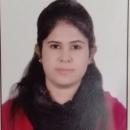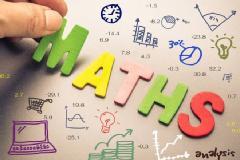This class is for Indian Economic Development and Macroeconomic theory .Classes will be on alternate days .We will provide a wide range of concepts and advanced information regarding the subject.
Objectives of course: Understanding of some basic economic concepts and development of economic reasoning which the learners can apply in their day-to-day life as citizens, workers and consumers. Realisation of learners’ role in nation building and sensitivity to the economic issues that the nation is facing today. Equipment with basic tools of economics and statistics to analyse economic issues. This is pertinent for even those who may not pursue this course beyond senior secondary stage. Development of understanding that there can be more than one view on any economic issue and necessary skills to argue logically with reasoning.
Details of course content :
Part A: Introductory Macroeconomics Unit 1: National Income and Related Aggregates 30 Periods What is Macroeconomics? Basic concepts in macroeconomics: consumption goods, capital goods, final goods, intermediate goods; stocks and flows; gross investment and depreciation. Circular flow of income (two sector model); Methods of calculating National Income - Value Added or Product method, Expenditure method, Income method. Aggregates related to National Income: Gross National Product (GNP), Net National Product (NNP), Gross Domestic Product (GDP) and Net Domestic Product (NDP) - at market price, at factor cost; Real and Nominal GDP GDP Deflator, GDP and Welfare 7 Unit 2: Money and Banking 15 Periods Money – meaning and functions, supply of money - Currency held by the public and net demand deposits held by commercial banks. Money creation by the commercial banking system. Central bank and its functions (example of the Reserve Bank of India): Bank of issue, Govt. Bank, Banker's Bank, Control of Credit through Bank Rate, Cash Reserve Ratio (CRR), Statutory Liquidity Ratio (SLR), Repo Rate and Reverse Repo Rate, Open Market Operations, Margin requirement. Unit 3: Determination of Income and Employment 30 Periods Aggregate demand and its components. Propensity to consume and propensity to save (average and marginal). Short-run equilibrium output; investment multiplier and its mechanism. Meaning of full employment and involuntary unemployment. Problems of excess demand and deficient demand; measures to correct them - changes in government spending, taxes and money supply. Unit 4: Government Budget and the Economy 17 Periods Government budget - meaning, objectives and components. Classification of receipts - revenue receipts and capital receipts; Classification of expenditure – revenue expenditure and capital expenditure. Balanced, Surplus and Deficit Budget – measures of government deficit. Unit 5: Balance of Payments 18 Periods Balance of payments account - meaning and components; Balance of payments – Surplus and Deficit Foreign exchange rate - meaning of fixed and flexible rates and managed floating. Determination of exchange rate in a free market, Merits and demerits of flexible and fixed exchange rate. Managed Floating exchange rate system 8 Part B: Indian Economic Development Unit 6: Development Experience (1947-90) and Economic Reforms since 1991: 28 Periods A brief introduction of the state of Indian economy on the eve of independence. Indian economic system and common goals of Five Year Plans. Main features, problems and policies of agriculture (institutional aspects and new agricultural strategy), industry (IPR 1956; SSI – role & importance) and foreign trade. Economic Reforms since 1991: Features and appraisals of liberalisation, globalisation and privatisation (LPG policy); Concepts of demonetization and GST Unit 7: Current challenges facing Indian Economy 60 Periods Human Capital Formation: How people become resource; Role of human capital in economic development; Growth of Education Sector in India Rural development: Key issues - credit and marketing - role of cooperatives; agricultural diversification; alternative farming - organic farming Employment: Growth and changes in work force participation rate in formal and informal sectors; problems and policies Sustainable Economic Development: Meaning, Effects of Economic Development on Resources and Environment, including global warming Unit 8: Development Experience of India: 12 Periods A comparison with neighbours India and Pakistan India and China Issues: economic growth, population, sectoral development and other Human Development Indicators Part C: Project in Economics 20 Periods Prescribed Books: 1. Statistics for Economics, NCERT






